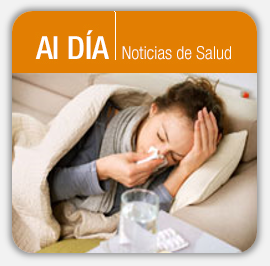Recomendación de la comunidad científica: usar las evidencias más recientes como guía para la prevención y protección contra el H1N1
La temporada de influenza se acerca conjuntamente con la reaparición potencial del H1N1 conduciendo a los especialistas en enfermedades infecciosas, epidemiólogos y especialistas en prevención a aconsejar a funcionarios a establecer recomendaciones para la población y trabajadores de la salud a partir del conocimiento científico y la experiencia de primera línea ganada en el brote de este verano.
En una declaración conjunta, las tres organizaciones científicas líderes en la prevención de las enfermedades infecciosas, La Sociedad Epidemiológica para la Salud de América (SHEA), la Sociedad de Enfermedades Infecciosas de América (IDSA) y la Asociación de Profesionales en el Control de Infecciones y Epidemiología (APIC), así como el Colegio Americano de Medicina Ocupacional y Ambiental (ACOEM), advirtieron que si no se actúa de acuerdo a lo que la ciencia indica, ello no conducirá a fortalecer la prevención sino que podría inhibir una respuesta efectiva a un futuro brote.
“En respuesta a la pandemia de influenza H1N1, la comunidad dedicada a las enfermedades infecciosas inmediatamente se lanzó al estudio sobre la forma de propagación del virus, cómo causa la enfermedad y cual es el mejor medio para tratar la enfermedad y sus formas de presentación. Ahora sabemos que el virus H1N1 se propaga como la influenza estacional -principalmente a través de gotas. No es una enfermedad transmisible por el aire como la tuberculosis -una diferencia importante que debe tenerse en cuenta para los protocolos de hospitales y otros establecimientos de salud” dijo Mark Rupp, MD de la University of Nebraska Medical Center y Presidente de SHEA.
http://www.medicalnewstoday.com/articles/160601.php
Prudent measures, according to Rupp, require rigorous and consistent application of basic infection control and personal hygiene practices including: adherence to hand hygiene and cough etiquette, rapid identification and separation of patients with the virus, and utilization of appropriate personal protective equipment – surgical masks, in the case of droplet transmissible diseases like H1N1.
The scientific groups also offered recommendations for circumstances that would warrant the use of fit-tested respirator masks. In the case of certain procedures that could potentially “aerosolize” the virus, thereby allowing for airborne transmission, healthcare workers should wear respirators. The procedures warranting this extra precaution include: bronchoscopy, open suctioning of airway secretions, resuscitation involving emergency intubation or cardiac pulmonary resuscitation, and endotracheal intubation.
“Surgical masks provide the level of protection needed for healthcare workers who may be exposed to the H1N1 virus. Using respirators in situations other than when there is the potential for the virus to become aerosolized is not wise,” said Anne Gershon, MD, FIDSA, President of IDSA. “Respirators do not provide increased protection against the H1N1 virus. Inappropriate use could result in a shortage of the respirators, which are essential to the prevention and control of truly airborne pathogens such as tuberculosis. This would put healthcare workers and patients at even greater risk,” Gershon added.
Another critical component to an appropriate response to the H1N1 virus, according to the groups, is avoiding implementation of automatic reassignment of high-risk healthcare workers who could be exposed to the virus. The current protocol provides sufficient protection, and reassignment wrongfully implies this is not the case.
“The members of our organizations are professionals who come face to face with patients on a daily basis. Our utmost concern is the protection of healthcare workers and the community against the spread of this virus,” said Christine Nutty RN, CIC, President of APIC. “Adherence to basic infection prevention precautions is crucial. Community exposures, failing to adhere to precautions like rigorous hand hygiene, and failing to identify and isolate affected patients are causes of the majority of H1N1 illnesses among healthcare workers.”
“Scientists around the world are researching the H1N1 virus to keep patients and healthcare workers safe as we enter the flu season this fall. Our goal is to protect our colleagues and ourselves, to provide excellent care to our patients, and to make sure our hospitals are safe for visitors and families,” said Rupp of SHEA. “Ignoring what we know about the biology of this virus and how it spreads, and allowing fear to drive our decisions will make us no safer, and will undoubtedly put us at greater risk by limiting our capacity to manage future outbreaks of this virus and other infectious diseases.”
Publicado: ago 13th, 2009. ![]()










